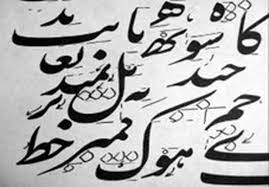Today’s Current Affairs: 17th Jan 2024 for UPSC IAS exams, State PSC exams, SSC CGL, State SSC, RRB, Railways, Banking Exam & IBPS, etc
Table of Contents
Farsi Language : One Of The Classical Languages

The External Affairs Minister recently announced that the Government of India has decided to include Farsi (Persian) as one of the classical languages in India under the New Education Policy.
- Farsi, also known as Persian Language, is the most widely spoken member of the Iranian branch of the Indo-Iranian languages, a subfamily of the Indo-European languages.
- It is the official language of Iran, and two varieties of Persian known as Dari and Tajik are official languages in Afghanistan and Tajikistan, respectively.
- Significant populations of Farsi speakers can be found in other Persian Gulf countries (Bahrain, Iraq, Oman, Yemen, and the United Arab Emirates), as well as large communities in the US.
- It has about 62 million native speakers, ranking it among the world’s 20 most widely spoken first languages.
- Farsi in Iran is written in a variety of the Arabic script called Perso-Arabic, which has some innovations to account for Persian phonological differences.
- This script came into use in Persia after the Islamic conquest in the seventh century.
- Its relatives are the languages of northern India and, more distantly, the major European languages including English.
Classical Languages in India:
- Currently, six languages enjoy the ‘Classical’ status: Tamil (declared in 2004), Sanskrit (2005), Kannada (2008), Telugu (2008), Malayalam (2013), and Odia (2014).
Tibetan Brown Bear : Recently Sighted

A rare and elusive bear, the Tibetan brown bear, has been recently sighted in Sikkim, making it the first confirmed record of the animal being sighted in India.
- The Tibetan brown bear, also known as the Tibetan blue bear, is one of the rarest subspecies of bears in the world and is rarely sighted in the wild.
- Scientific Name: Ursus arctos pruinosus
- It inhabits alpine forests, meadows, and steppes, close to the tree line.
- This rare bear is very different from the more commonly found Himalayan black bear in terms of its appearance, habitat, and behaviour.
- Conservation Status:
- IUCN Red List: Least Concern
- CITES: Appendix I
- Wildlife Protection Act of 1972: Schedule II
Windfall Tax : India Cut Its Windfall Tax On Petroleum Crude

India cut its windfall tax on petroleum crude to 1,700 rupees ($20.53) a tonne from 2,300 rupees a tonne, according to a recent government notification.
- Windfall Tax levied by governments against certain industries when economic conditions allow those industries to experience significantly above-average profits.
- The term “windfall” refers to an unexpected rise in profits, and the tax on windfall gains is known as the windfall tax.
- When the government notices a sudden increase in an industry’s revenue, they impose this tax.
- The most common industries that fall target to windfall gains tax include oil, gas, and mining.
- Purpose:
- Redistribution of unexpected gains when high prices benefit producers at the expense of consumers;
- To fund social welfare schemes;
- As a supplementary revenue stream for the government;
- As a way for the Government to narrow the country’s widening trade deficit.
Gut Microbiota : Finding

Scientists are finding that the gut microbiota may be linked to heart health, some cancers, and even the colour of urine.
- The human gut microbiota refers to the trillions of microbes, such as bacteria, viruses, fungi, and parasites, that live in the human gut.
- Previously, people referred to the gut microbiota as the microflora of the gut.
- The gut microbiome is the environment they live in.
- While there are beneficial bacteria in the gut, there are also harmful bacteria that can enter the Gastrointestinal (GI) tract and cause infection.
- These infections include food poisoning and other GI diseases that result in diarrhoea and vomiting.
- Research suggests that bacterial populations in the GI system play a role in developing gut conditions, including inflammatory bowel diseases (IBD), such as Crohn’s disease and ulcerative colitis.
- Low microbial diversity in the gut also has links to obesity and type 2 diabetes.
- The status of the gut microbiota also has links to metabolic syndrome.
- Disturbing the microbiota with antibiotics can also lead to disease, including infections that become resistant to antibiotics.
One Vehicle One FASTag Initiative:

The National Highways Authority of India (NHAI) has launched the ‘One Vehicle, One FASTag’ initiative.
- The National Highways Authority of India suggested tagging users to complete the Know Your Customer (KYC) process by the end of January 31 to avoid deactivation.
- The move aims to enhance the efficiency of the Electronic Toll Collection system and provide seamless movement at the Toll Plazas.
- The new arrangement Of ‘One Vehicle, One FASTag’ has also been introduced to discourage user behaviour of using single FASTag for multiple vehicles or linking multiple FASTags to a particular vehicle.
- The initiative had been taken after the recent reports of multiple FASTags being issued for a particular vehicle and FASTags being issued without KYC in violation of RBI’s mandate.
FASTag:
- It is a device that employs Radio Frequency Identification (RFID) technology for making toll payments directly while the vehicle is in motion.
- It is a RFID passive tag used for making toll payments directly from the customers linked prepaid or savings/current account.
- It is affixed on the windscreen of the vehicle and enables the customer to drive through toll plazas, without stopping for any toll payments.
- The toll fare is directly deducted from the linked account of the customer.
Exercise Ayutthaya:

The maiden Bilateral Maritime Exercise -Ayutthaya’ between the Indian Navy (IN) and Royal Thai Navy (RTN) was conducted.
- The IndIa-Thailand Bilateral Exercise is being named as ‘Ex-Ayutthaya’, which literally translates to ‘The Invincible One’ or ‘Undefeatable’.
- It symbolises the significance of two of the oldest cities Ayodhya in India and Ayutthaya in Thailand, the historic legacies, rich cultural ties and shared historical narratives dating back to several centuries.
- Indigenously built Indian Naval ships Kulish and IN LCU 56 participated in the inaugural edition of the exercise.
- With the institution of a Bilateral Exercise, both navies have taken a step towards strengthening operational synergy and progressively increasing the exercise complexity.
Multidimensional Poverty Index: NITI Ayog

The NITI Aayog has released a Discussion Paper titled-‘Multidimensional Poverty in India since 2005-06’, stating that 24.82 crore people escaped Multidimensional Poverty in the last nine years.
Key Highlights of the Multidimensional Poverty Index in India Since 2005-2006:
- India has experienced a significant reduction in multidimensional poverty from 29.17% in 2013-14 to 11.28% in 2022-23, marking a decrease of 17.89% points.
- Approximately 24.82 crore people have escaped multidimensional poverty in the last nine years (2013-14 to 2022-23). This positive change is attributed to various initiatives by the government.
- Uttar Pradesh, Bihar, Madhya Pradesh, and Rajasthan have recorded the sharpest decline in the number of people classified as poor based on the MPI.
- Uttar Pradesh saw the largest decline with 5.94 crore people escaping multidimensional poverty, followed by Bihar at 3.77 crore, Madhya Pradesh and Rajasthan.
- All 12 indicators of the MPI have shown significant improvement, reflecting progress in Health, Education, and Standard of Living dimensions.
- The Severity of Deprivation (SoD) declined at a slightly lower rate between 2015-16 and 2019-21 compared to 2005-06 and 2013-14.
- SoD measures deprivations the average multidimensionally poor person suffers from.
- In 2005-06, the share of MPI poor in India’s total population was 55.34%
- India is likely to achieve Sustainable Development Goals (SDG) Target 1.2, which aims to reduce “at least by half the proportion of men, women, and children of all ages living in poverty in all its dimensions according to national definitions” well before 2030.
- Indicators related to the standard of living dimension showed significant improvements, such as reduced deprivation in cooking fuel, sanitation facilities, and access to bank accounts.
Ugram : Indigenous Assault Rifle

The Defence Research and Development Organisation (DRDO) has launched an indigenous assault rifle named ‘Ugram’, intended to meet the operational requirements of armed forces, paramilitary, and state police entities.
- It has been developed by the Armament Research and Development Establishment (ARDE), a unit of DRDO and Hyderabad-based private firm Dvipa Armour India Private Limited.
- The Ugram is intended to replace the aging INSAS rifle currently used by the Indian Armed Forces.
- It has been developed as per the General Staff Qualitative Requirements (GSQR) of the army into consideration.
- GQSR is one of the initial processes in capital procurement.
- It outlines why the equipment is required, its physical and operational details, as well as the maintainability and quality requirements.
Excavation At Vadnagar:

A joint study by the Indian Institute of Technology (Kharagpur) and Archaeological Survey of India (ASI) has found evidence of cultural continuity in Vadnagar, Gujarat, even after the Harappan collapse.
- The study challenges the notion of a “Dark Age” by providing evidence of cultural continuity in Vadnagar even after the collapse of the Harappan civilization.
- The study reveals evidence of a human settlement in Vadnagar dating back to as old as 800 BCE.
- This places the settlement in the late-Vedic/pre-Buddhist Mahajanapadas or oligarchic republics period.
- The rise and fall of different kingdoms over a 3,000-year period, as well as recurrent invasions by Central Asian warriors, are suggested to be driven by severe changes in climate, such as variations in rainfall or droughts.
- Vadnagar is described as a multicultural and multireligious settlement that included Buddhist, Hindu, Jain, and Islamic influences.
- The excavation uncovered seven cultural stages (periods), including Mauryan, Indo-Greek, Indo-Scythian, Hindu-Solankis, Sultanate-Mughal, and Gaekwad-British colonial rule, up to the present day.
Operation Amrith : Antimicrobial Resistance Intervention For Total Health

The Kerala Drug Control Department has initiated Operation Amrith (Antimicrobial Resistance Intervention For Total Health) to curb the overuse of antibiotics in the state.
- Pharmacies are required to maintain accurate records of antibiotic sales, display posters stating ‘antibiotics not sold without doctor’s prescription,’ and comply with prescription regulations.
- Operation Amrith aligns with Kerala’s Anti-Microbial Resistance Strategic Action Plan (KARSAP), reflecting a multi-sectoral approach to combat antimicrobial resistance (AMR).
- The state has implemented various initiatives, including the Antibiotic Literate Kerala Campaign, block-level AMR Committees, and the Kerala Antimicrobial Resistance Surveillance Network (KARS-NET) for surveillance.
- The move aims to raise awareness about AMR, ensure responsible antibiotic use, and prevent the spread of drug-resistant infection




